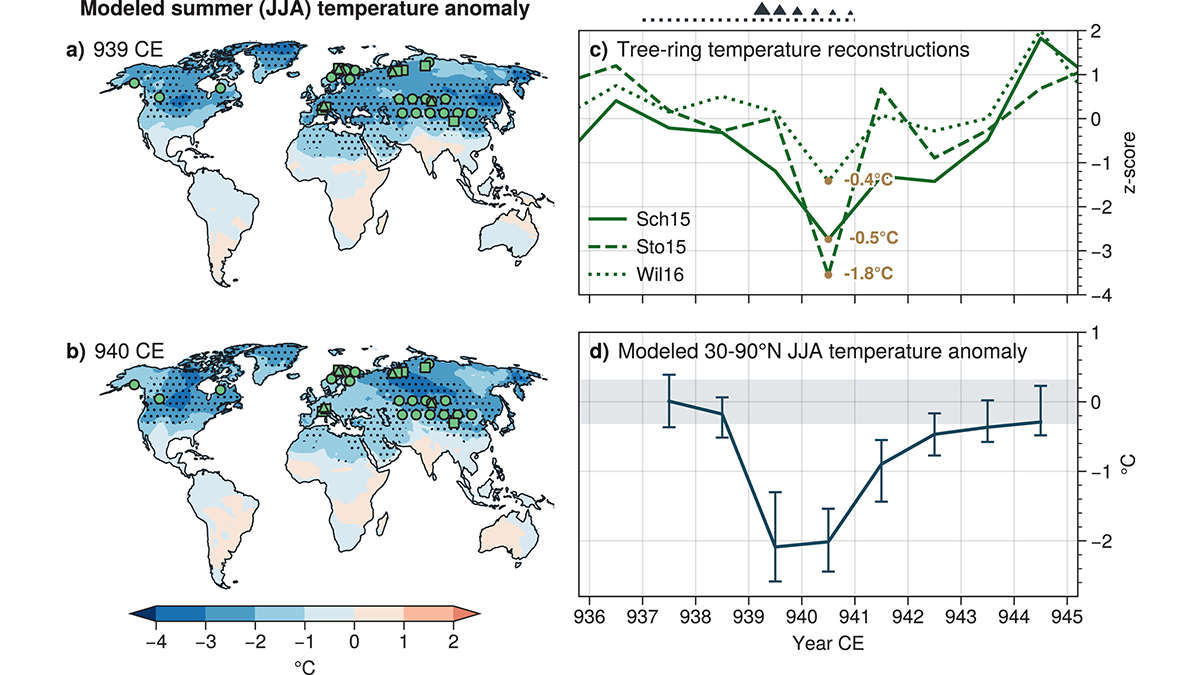Editors’ Highlights are summaries of recent papers by AGU’s journal editors.
Source: Geophysical Research Letters
Using recent improvements in our understanding of volcanic emissions, as well as comparisons to ice core measurements of non-sea-salt sulfur, Fuglestvedt et al. [2025] developed revised estimates of the emissions of the Eldgjá eruption. These sulfur and halogen emission estimates were incorporated in an atmosphere/climate model simulation of the 10th century.
The resulting predictions show higher aerosol optical depth and more cooling during the eruption than predicted previously. In addition, the simulated effects on the ozone layer show depletions related to halogen emissions. The larger amount of cooling improves the comparison to tree-ring proxies of temperature. The work demonstrates that improved emissions resolve past disagreements between the simulated cooling from an atmosphere/climate model and the tree-ring based records of temperature, providing new insight on the consequences of a volcanic eruption 1,000 years ago.
Citation: Fuglestvedt, H. F., Gabriel, I., Sigl, M., Thordarson, T., & Krüger, K. (2025). Revisiting the 10th-century Eldgjá eruption: Modeling the climatic and environmental impacts. Geophysical Research Letters, 52, e2024GL110507. https://doi.org/10.1029/2024GL110507
—Lynn Russell, Editor, Geophysical Research Letters

